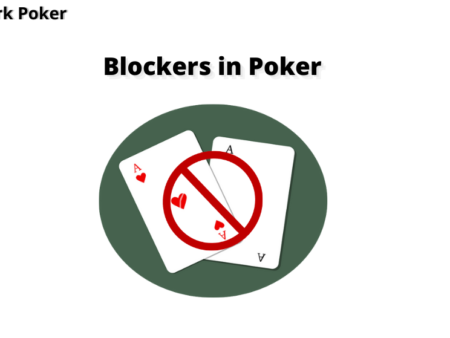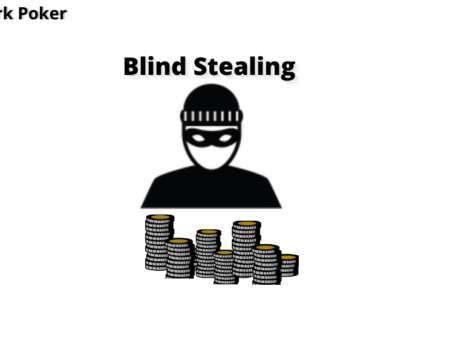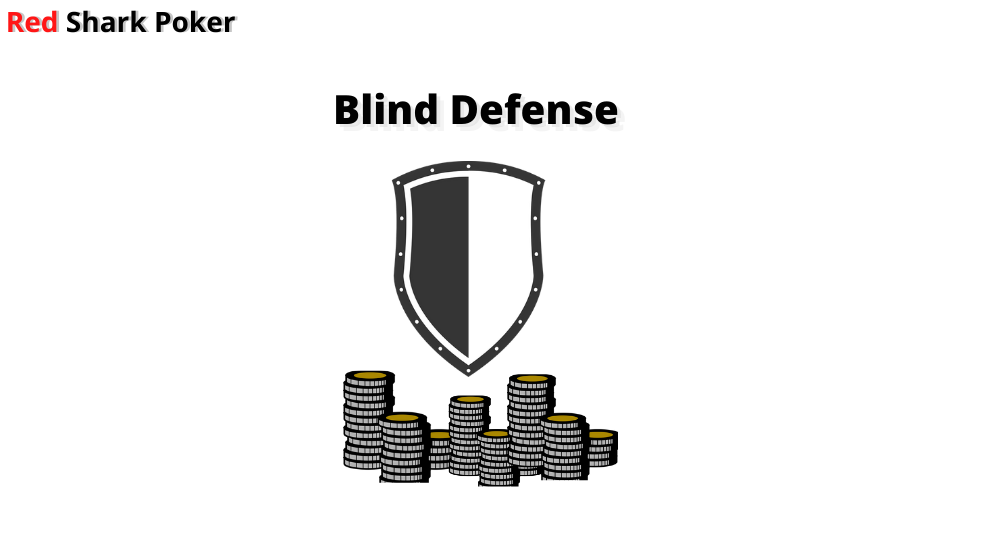
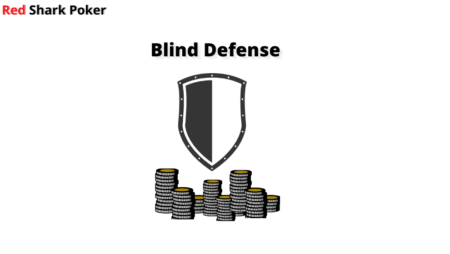
Blind defense refers to not folding to a pre-flop raise when you are in the big or small blind. Instead of folding and giving up your blinds, you defend your blinds by either calling or raising.
Blind defense is an essential strategy that you must know in order to stop losing blinds whenever you face a preflop raise. If you give up your blinds every time you face a raise, it can be a major leak in your game that your opponents can exploit.
Blind Defense Against Stealing
Most of the experienced players attempt to steal your blinds when they are in late positions. If you do not defend your blinds against steals, you will be exploited and lose your blinds more often. Defending your blinds is most effective against steals with a re-raise. When you make a decent re-raise against an opponent who is trying to steal, the opponent will think twice before stealing again. You will give a clear warning to your opponent not to steal as you are capable of re-raising.
If you don’t know about stealing blinds, click here: Blind Stealing in Poker
Factors Affecting Blind Defense in Poker
Take a look at the following factors before defending your blinds. Calculate your pot odds and equity before defending. Also, know the type of opponent who is raising on the preflop.
Pot Odds
Your pot odds will give you an estimate of how much equity you need in order to make a profit. Pot odds will help you to assess the strength of your hand against the raise you are facing. This helps especially against tight-aggressive players who raise with strong hands even from late positions. Let’s look at an example:
You are in the big blind with J♦ 10♦ in a $5/$10 6 max game. The action folds to the button, and he raises to $30. The small blind folds, and it’s your turn to act. Let’s calculate the pot odds before defending the blinds.
Total Pot = $15 (Big + Small Blinds) + $30 (Button’s Raise)
= $45
Amount to Call = $20 (You have paid $10 as the Big Blind)
Pot Odds = 20/65 X 100
= 31%
So, you need to have at least 31% equity to defend your blinds.
Learn: How to Calculate Pot Odds
The player on the button is a tight-aggressive player who opens with only broadway hands + pocket sixes and above. If we use an equity calculator like Equilab, we see that we have 35.89% raw equity. Raw equity is the average percentage of how likely your hand is expected to win against your opponent’s range. This obviously changes on every street depending on the future cards.
If you don’t know how to calculate equity, read this: How to Calculate Equity in Poker?
Type of Opponent
You must take into consideration the type of opponent who is raising on the preflop. Is the opponent trying to steal, or is the opponent a tight player who is raising with a strong range? Note the following factors before making your blind defense in poker.
Opponent’s Position and Opening Ranges
It is important to note your opponent’s opening ranges according to his position. If an opponent is opening from an early position, you should tighten your defense range as you are up against a strong range. On the other hand, if your opponent is opening from a late position, you can defend your blinds with a wider range.
Opponent’s Raise Size
A typical raise size is 2X to 5X the big blinds. If your opponent bets more, you need to defend with a tighter range. A player can make a large raise with the top 10% to 20% of the total hands. So, it is better to defend with strong hands against large raises.
Ranges for Defending Blinds
There is no specific range of hands that you must defend. It depends more on the situation, not on the strength of your hands. When you are confident that an opponent is trying to steal from a late position, a re-raise will force the opponent to fold. However, there are some safe hands with which you can defend your blinds. The stronger the hands, the more you should defend. Look at the blind defense range chart that you can use while defending.
Note: You can modify the ranges according to your playing style and the type of opponents.
3bet (Re-raise) Range for Blind Defense
These hands have good raw equity that can help you to realize equity post-flop.
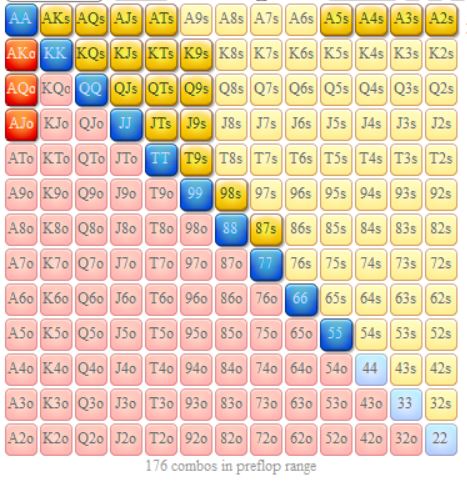
Calling Range for Blind Defense
These hands have decent raw equity with which you can call the preflop raise.
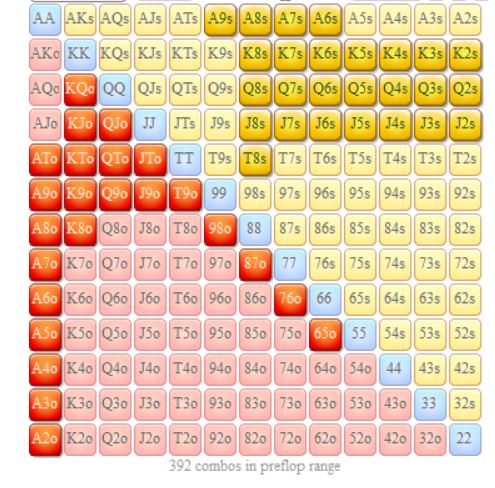
It is Not Compulsory to Defend Your Blinds
It is not compulsory for you to defend your blinds every time on the preflop. Remember, blinds are mandatory bets that every player has to place in both cash games and tournaments. Whenever you post your blinds, it is no longer your money. In other words, you do not own the blinds once it is posted. So, do not be possessive about your blinds and fold when you think you don’t have hands strong enough to defend. You will be the first to act post-flop if you defend and end up losing more money if the boards don’t favour your hand. Always be analytical and just fold your hands if you are not confident of how you are going to play post-flop.
Conclusion
You must have a solid blind defense strategy to stop the slow bleeding of blinds. Experienced players are always on the lookout to steal your blinds from late positions. When you are aware of this play, a re-raise (even if called) will send out a strong message that you are not going to let them steal. Calculate your pot odds and have a good read on your opponent’s range. Don’t become too attached to your blinds and better fold them if you are not confident of your hand.


